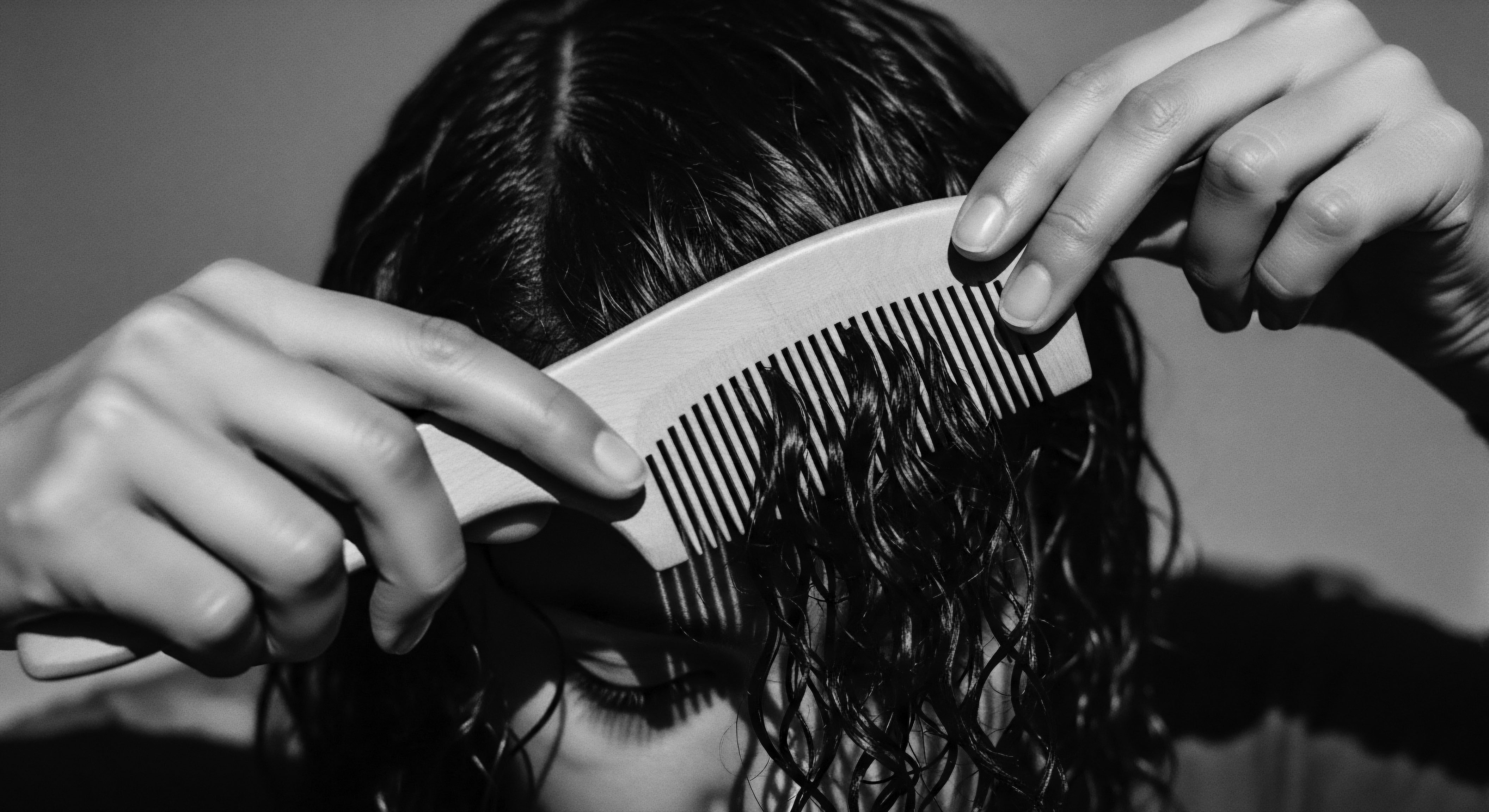
Fundamentals
The intricate world of hair, particularly textured hair, holds secrets whispered across generations, a legacy of resilience and radiant beauty. At its core, the vitality of each strand hinges upon a biological marvel known as Keratin Preservation. This term, in its most elemental sense, speaks to the diligent maintenance of Keratin, the foundational protein composing the hair shaft. Think of keratin as the very scaffolding of a strand, a fibrous protein formed from long chains of amino acids.
It imparts hair with its inherent strength, elasticity, and distinctive form. Without proper preservation, these delicate structures can weaken, leading to breakage and diminished luster.
For communities whose hair has always been a crown of cultural identity and ancestral connection, understanding Keratin Preservation extends beyond mere scientific explanation; it becomes a deeply rooted practice. It is an understanding that has been intuitively grasped and meticulously applied through traditional care rituals for centuries. These ancestral methods, passed down through oral tradition and lived experience, sought to shield the hair from environmental rigors, fortify its structure, and celebrate its natural inclination.
Keratin Preservation, in its simplest interpretation, represents the enduring commitment to maintaining the inherent strength and structural integrity of hair, a practice woven into the very fabric of textured hair heritage.
The hair’s outer layer, the Cuticle, consists of overlapping, scale-like cells that protect the inner cortex. The cortex, primarily made of keratin proteins, determines the hair’s strength and texture. The medulla, present in coarser hair, sits at the center. When these layers, especially the cuticle, are compromised, the hair becomes vulnerable.
Traditional practices, often employing natural elements from the earth, instinctively addressed this vulnerability. They understood that a well-sealed cuticle meant less moisture loss and greater protection for the keratin within.

Echoes from the Source ❉ Ancient Practices and Elemental Biology
Across the African continent and within diasporic communities, hair has always possessed a profound significance, transcending simple aesthetics to embody spiritual power, social standing, and communal bonds. The attention given to hair care was not a superficial act but a sacred ritual, a communal gathering, and a form of deep self-respect. This reverence for hair naturally led to practices that, though not explicitly labeled “keratin preservation” in modern scientific terms, served that very purpose.
- Oiling Rituals ❉ Generations applied natural oils and butters—like shea butter, palm oil, and various plant extracts—to their hair and scalp. These rich emollients created a protective barrier, sealing the cuticle and minimizing moisture evaporation. This act directly contributed to maintaining the hair’s pliability and preventing the drying out of the keratin structure. For instance, shea butter, derived from the nuts of the shea tree (Vitellaria paradoxa) in West Africa, has been historically used for its moisturizing and nourishing properties, rich in fatty acids and vitamins that contribute to hair health and act as a protective barrier against damage.
- Protective Styling ❉ The art of braiding, twisting, and intricate threading styles, such as Irun Kiko among the Yoruba people of Nigeria, was not merely decorative. These styles, which could take hours or even days to create and were often social events, served a vital function ❉ protecting the hair from environmental exposure, reducing daily manipulation, and minimizing tangling and breakage. By keeping the hair bundled and contained, these styles reduced mechanical stress on the keratin bonds, preserving the hair’s length and overall health.
- Herbal Infusions ❉ Various herbs and plant-based concoctions were used as rinses and treatments. While the specific biochemical mechanisms were not articulated, these infusions often possessed properties that cleansed the scalp gently, balanced pH, and provided micronutrients that supported hair vitality. The knowledge of these botanicals was a deeply held ancestral wisdom, passed down with precision and care.
These time-honored approaches were not just about preventing damage; they were about cultivating an environment where hair could thrive, retaining its natural strength and beauty. The intuitive understanding of hair’s needs, developed over millennia, laid the groundwork for what we now understand as the scientific principles of Keratin Preservation. It is a testament to the profound wisdom embedded within ancestral traditions.
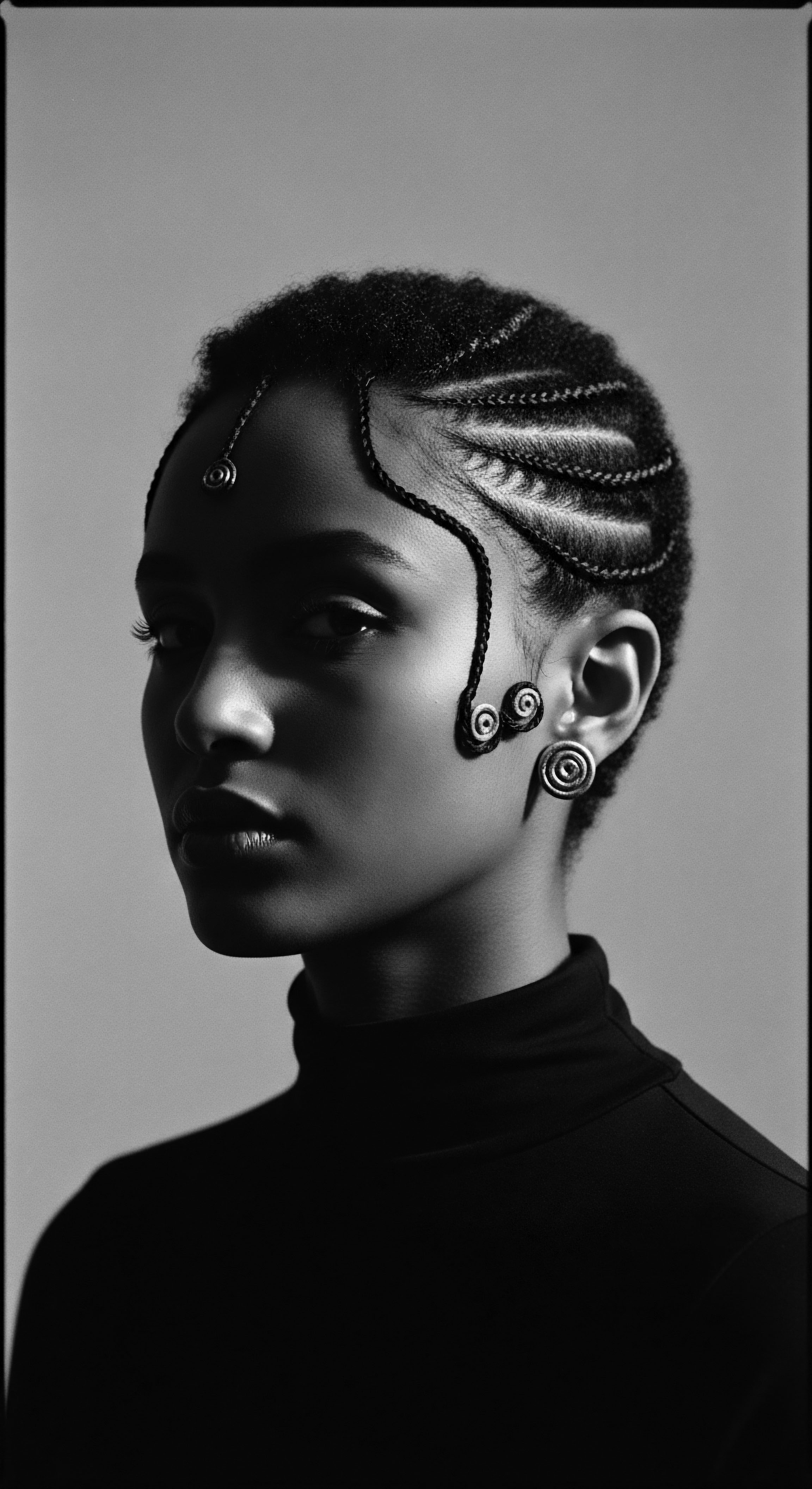
Intermediate
Moving beyond the foundational understanding, the intermediate interpretation of Keratin Preservation for textured hair delves into the subtle dance between internal structure and external influence. This exploration acknowledges the unique architecture of coiled and curly strands, where the very helical arrangement of keratin proteins presents both inherent strength and particular vulnerabilities. Textured hair, with its elliptical follicle shape, possesses a distinctive distribution of keratin components, leading to varied curl patterns and a greater propensity for moisture loss and breakage along its bends and twists. The maintenance of keratin, therefore, becomes a practice of intentional care, designed to fortify these unique structural nuances.
The integrity of the hair’s keratin is directly tied to the strength of its disulfide bonds, formed between cysteine amino acids. These bonds contribute significantly to the hair’s resilience and shape. External factors, from harsh chemical treatments to excessive heat styling, can disrupt these bonds, leading to irreversible damage and a compromised hair structure.
Historically, the imposition of Eurocentric beauty standards often encouraged practices that directly assaulted the natural keratin structure of textured hair, such as chemical relaxers and hot combs. These methods, while aiming for a straightened appearance, fundamentally altered the hair’s internal composition, often leading to weakened strands and chronic breakage.
Keratin Preservation for textured hair represents a conscious effort to safeguard the hair’s distinctive protein architecture, resisting external pressures that seek to diminish its natural form and strength.
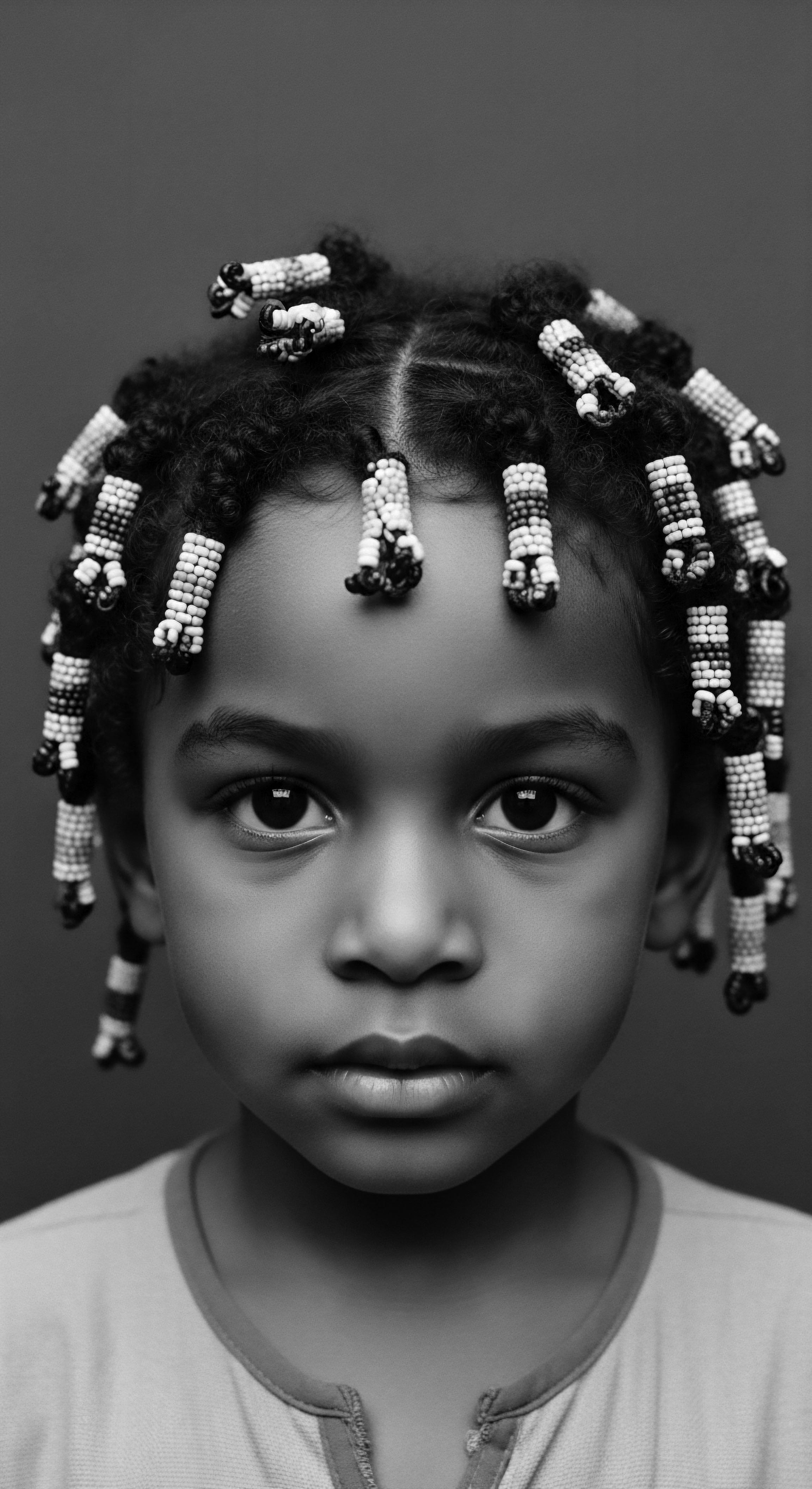
The Tender Thread ❉ Living Traditions of Care and Community
The journey of Keratin Preservation in textured hair is a living narrative, continually shaped by the wisdom of elders and the innovations of new generations. The historical context of hair care within Black and mixed-race communities is not merely a collection of past practices; it is a dynamic, ongoing conversation about identity, self-acceptance, and the reclamation of heritage. The collective memory of hair rituals, often performed in communal settings, served as a powerful mechanism for transferring knowledge about how to best care for hair, implicitly preserving its keratin.
Consider the profound social significance of hair braiding circles, prevalent across various African societies and continuing in the diaspora. These gatherings were not simply about styling hair; they were spaces for storytelling, for sharing wisdom, for communal bonding, and for passing down intricate techniques that protected the hair. The deliberate act of braiding hair into protective styles minimized exposure to elements, reduced friction, and maintained the hair’s natural moisture balance, all contributing to the longevity and strength of the keratin fibers. This hands-on, intergenerational transmission of knowledge was a cornerstone of Keratin Preservation long before the term existed.
The use of natural ingredients also speaks to a deep, practical understanding of Keratin Preservation. For example, the Chebe powder, sourced from the Northern Chad mountains, has been rumored to be the secret to the long, lustrous hair of the Bassara/Baggara Arab women in Chad. This powder, typically mixed with water to form a paste and applied to the hair, provides a protective coating that helps to seal in moisture and prevent breakage, thereby preserving the keratin. This is not merely anecdotal; it represents an ethnobotanical wisdom that recognized the intrinsic properties of natural elements in supporting hair health.
| Ancestral Practice Protective Braiding & Twisting |
| Description and Cultural Context Intricate styles like cornrows, Bantu knots, and various twists, often created in communal settings, served as a social and artistic expression. These practices were vital for identity and status in many African cultures. |
| Keratin Preservation Link Minimizes daily manipulation, reduces mechanical stress, protects hair from environmental damage, and seals in moisture, thereby safeguarding keratin bonds. |
| Ancestral Practice Natural Oils & Butters Application |
| Description and Cultural Context Generational use of ingredients such as shea butter, palm oil, and coconut oil, often massaged into the scalp and strands. These were not just for beauty but also for spiritual anointing and health. |
| Keratin Preservation Link Forms a protective lipid barrier around the hair shaft, reducing protein loss and moisture evaporation, which keeps keratin hydrated and supple. |
| Ancestral Practice Herbal Rinses & Treatments |
| Description and Cultural Context Utilization of plant extracts and infusions for cleansing and conditioning, passed down through oral tradition. This knowledge was often specific to local flora and their perceived healing properties. |
| Keratin Preservation Link Supports scalp health, balances pH, and provides micronutrients, indirectly contributing to the healthy growth of new keratinized cells and the integrity of existing strands. |
| Ancestral Practice These practices underscore a holistic approach to hair care, where aesthetic, social, and spiritual dimensions intertwine with the fundamental biological imperative of preserving hair's core protein structure. |
The modern natural hair movement, a resurgence of pride in textured hair, draws directly from these ancestral roots. It acknowledges the inherent beauty and strength of naturally coily, kinky, and curly strands, advocating for care practices that honor the hair’s natural state. This movement, at its heart, is a contemporary expression of Keratin Preservation, encouraging gentle handling, moisture retention, and minimal use of damaging chemical or heat processes. It is a conscious return to practices that intrinsically support the hair’s keratin structure, affirming a lineage of wisdom that always understood the delicate balance required for hair vitality.
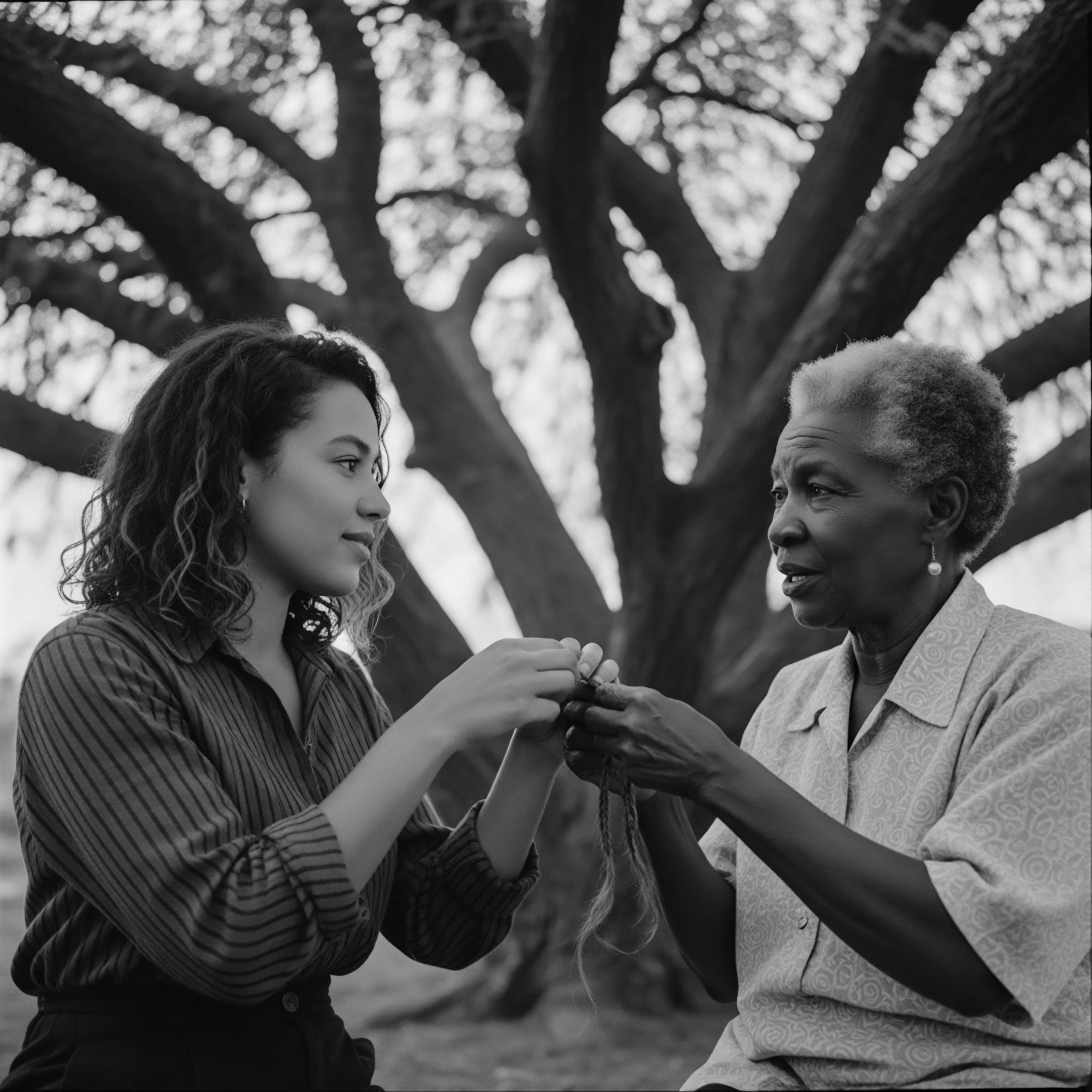
Academic
The academic elucidation of Keratin Preservation transcends superficial observations, delving into the precise biophysical and chemical mechanisms that underpin the resilience and vulnerability of hair, particularly within the context of diverse textured hair phenotypes. Keratin, the primary structural protein of hair, is a complex fibrous protein predominantly composed of alpha-helices, which are then organized into intermediate filaments within the hair’s cortical cells. These filaments are cross-linked by disulfide bonds, formed between cysteine residues, which are fundamental to the hair’s mechanical strength, elasticity, and overall architectural integrity.
The specific arrangement and density of these disulfide bonds, alongside the elliptical cross-sectional shape of the hair follicle, contribute significantly to the characteristic coiling and curvature observed in textured hair. This unique morphology means that textured hair often experiences increased points of stress along its bends, making it inherently more susceptible to mechanical fracture and cuticle lifting, thus necessitating a specialized approach to Keratin Preservation.
From a rigorous scientific standpoint, Keratin Preservation denotes the active strategies employed to prevent the degradation of these disulfide bonds, maintain the integrity of the cuticle layer, and ensure adequate hydration of the cortical matrix. Degradation can arise from various stressors ❉ hydrolytic cleavage from excessive water exposure (hygral fatigue), oxidative damage from environmental pollutants or chemical treatments, and thermal denaturation from high heat styling. Each of these mechanisms directly compromises the keratin structure, leading to reduced tensile strength, increased porosity, and ultimately, breakage. The significance of Keratin Preservation, therefore, lies in its direct correlation with hair health, length retention, and the hair fiber’s ability to withstand both intrinsic and extrinsic challenges.
The academic understanding of Keratin Preservation centers on safeguarding the intricate disulfide bonds and hierarchical protein structures within textured hair, a scientifically validated pursuit deeply intertwined with ancestral care wisdom.

Deep Currents ❉ Keratin Preservation through a Heritage Lens
The scholarly examination of Keratin Preservation in textured hair is incomplete without a profound engagement with its heritage dimensions, particularly the historical and ongoing experiences of Black and mixed-race communities. The deliberate and often brutal disruption of traditional hair care practices during the transatlantic slave trade serves as a stark, yet crucial, historical example of the assault on both physical hair integrity and cultural identity. Upon capture and before boarding slave ships, African captives were frequently subjected to forced head shaving. This act was not merely a sanitary measure; it was a calculated, dehumanizing strategy designed to strip individuals of their cultural markers, sever their spiritual connections, and dismantle their sense of self, all deeply intertwined with their hair.
As Akanmori (2015) describes, the grooming of hair and hairstyling as a socio-cultural practice and identity was a deprivation Africans experienced during slavery. This violent erasure of hair, which historically conveyed social status, tribal affiliation, and spiritual messages, directly impacted the ancestral knowledge of keratin preservation, forcing adaptations in harsh, unyielding conditions.
Despite these systemic assaults, enslaved Africans and their descendants demonstrated remarkable ingenuity and resilience in preserving their hair, often with limited resources. The practice of protective styling, such as braiding, continued covertly, not only for aesthetics but also for practical survival. A powerful, though less commonly cited, historical example is the practice of enslaved African women braiding seeds for crops, and sometimes even maps to freedom, into their hair before being transported or as a means of survival on plantations.
This act, while primarily serving a function of survival and resistance, inherently involved meticulous hair care—the braiding itself being a form of keratin preservation by minimizing exposure and tangling. It represents a profound testament to how ancestral knowledge of hair care, even under duress, became a tool for sustaining life and cultural continuity, implicitly safeguarding the hair’s structural integrity against unimaginable odds.
The ongoing impact of this historical trauma is evident in the lingering effects of chemically altering textured hair, a practice that gained widespread popularity due to societal pressures to conform to Eurocentric beauty standards. Chemical relaxers, for instance, permanently straighten hair by breaking and reforming disulfide bonds within the keratin structure. While achieving a desired aesthetic, these processes significantly weaken the hair, making it more prone to breakage and chronic damage, often leading to conditions like Central Centrifugal Cicatricial Alopecia (CCCA). The historical narrative of hair in Black communities is thus a compelling case study in how external societal pressures can undermine the intrinsic principles of Keratin Preservation, forcing a departure from practices that naturally supported hair health.
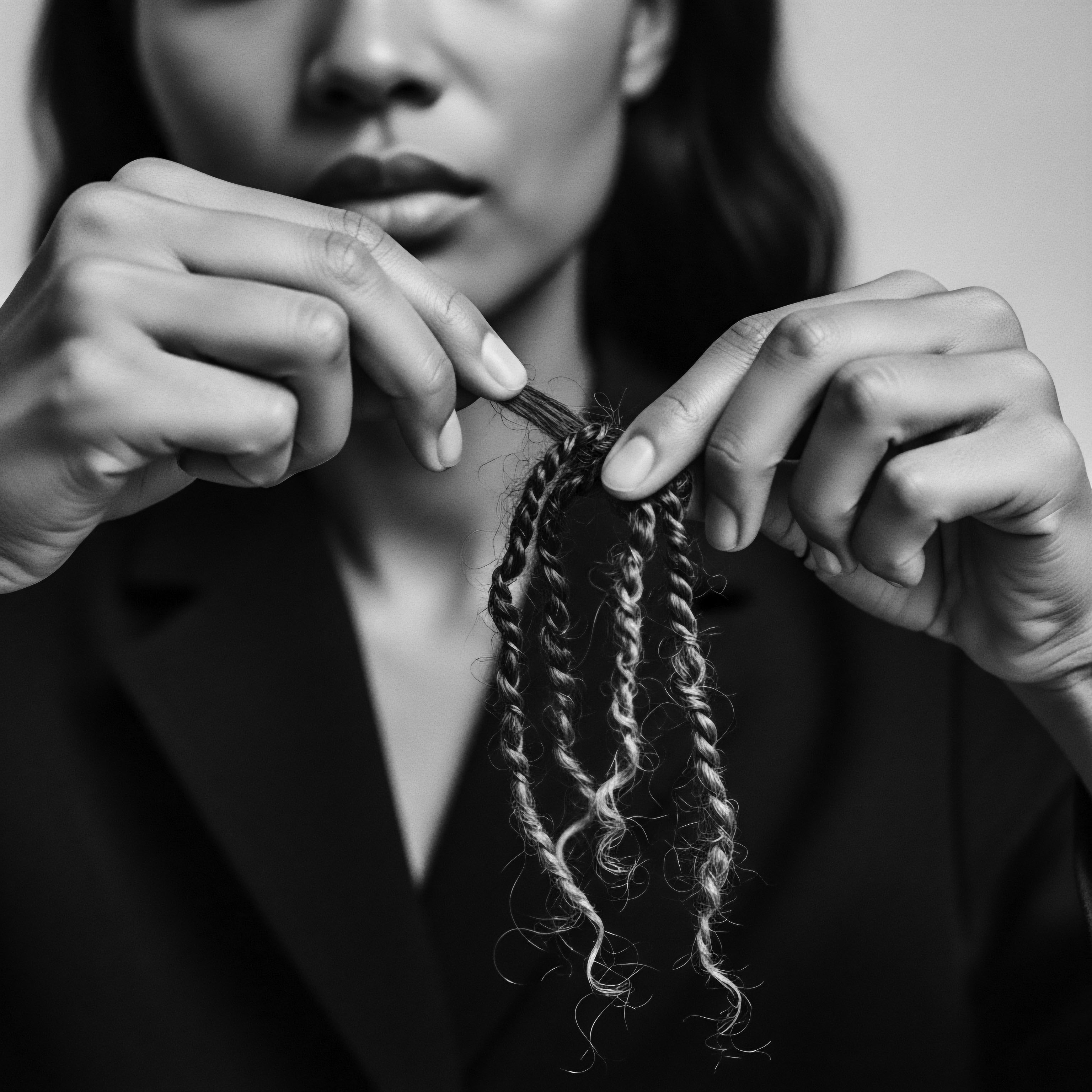
Interconnected Incidences ❉ The Socio-Biological Landscape of Keratin Preservation
The understanding of Keratin Preservation within textured hair is not a static concept; it evolves through a dynamic interplay of biological predispositions, cultural practices, and socio-historical forces. The helical structure of keratin in textured hair, characterized by a non-symmetrical distribution of cortical cells, contributes to its curl pattern and often a more fragile cuticle. This inherent biological reality means that approaches to preservation must be tailored, emphasizing practices that minimize mechanical stress and maximize moisture retention.
From an academic perspective, the efficacy of traditional ingredients in Keratin Preservation can be analyzed through their phytochemical composition. Shea butter, for instance, contains a rich profile of fatty acids (oleic, stearic, linoleic) and vitamins (A, E, F) that act as emollients, forming a protective barrier on the hair shaft. This barrier reduces transepidermal water loss and protects the keratin from environmental aggressors, effectively “refattening” the hair and enhancing its hydration. Similarly, various traditional herbal concoctions, while not always subject to rigorous clinical trials in a Western sense, often contain compounds with antioxidant, anti-inflammatory, and nourishing properties that support scalp health and indirectly contribute to the formation of robust keratin.
The implications for long-term hair health are profound. Communities that maintained traditions of gentle manipulation, protective styling, and natural product usage often experienced greater length retention and healthier hair over generations, despite environmental challenges. This is not merely anecdotal; it represents a form of empirical knowledge, honed through centuries of observation and practice. The modern scientific validation of these traditional methods, such as the protective benefits of natural oils on hair protein loss, provides a compelling bridge between ancestral wisdom and contemporary understanding.
The concept of Keratin Preservation, when viewed through this multifaceted lens, transcends a simple scientific definition. It becomes a testament to human adaptability, cultural resilience, and the enduring power of ancestral knowledge to inform and guide practices for holistic well-being, including the health and celebration of textured hair. It compels us to consider how societal structures and historical events have shaped not only beauty standards but also the very biological integrity of hair within specific populations, urging a renewed appreciation for the inherent strength and beauty of every strand.
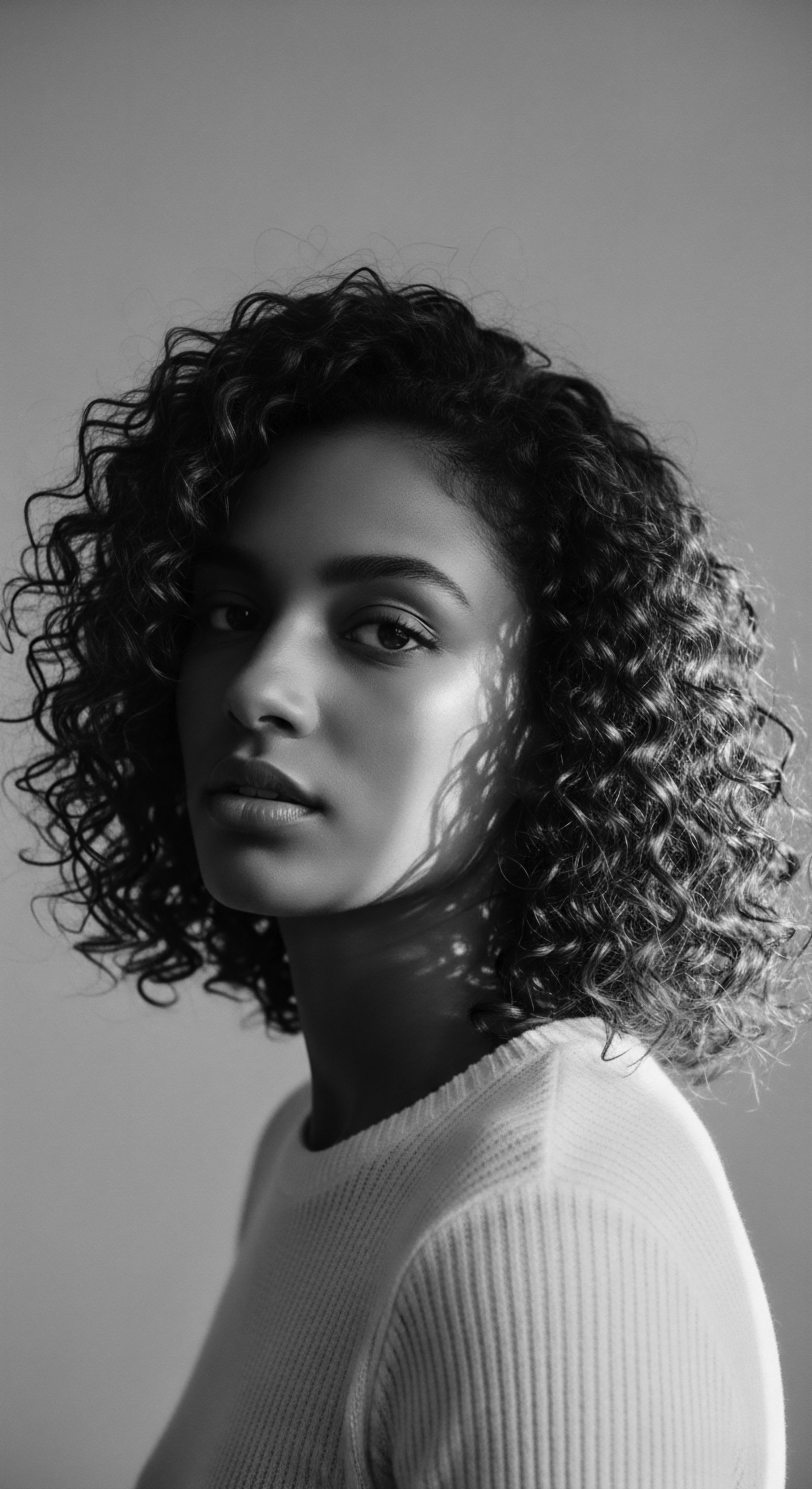
Reflection on the Heritage of Keratin Preservation
As we draw this meditation on Keratin Preservation to a close, the echoes of ancestral voices resonate with profound clarity. The scientific delineation of keratin, its intricate bonds, and its vulnerabilities, finds a timeless counterpart in the deeply intuitive practices of our forebears. They understood, without the aid of electron microscopes or chemical assays, the delicate balance required to maintain the vitality of hair, recognizing it not merely as a biological appendage but as a living extension of self, community, and spiritual lineage. This understanding, often expressed through the tender touch of hands braiding strands or the communal rhythm of oiling rituals, speaks to a holistic wisdom that saw hair health as an inseparable aspect of overall well-being and cultural continuity.
The journey of Keratin Preservation, particularly within the textured hair heritage, is a testament to the enduring spirit of adaptability and resilience. From the deliberate acts of forced shaving meant to sever identity, to the ingenious embedding of seeds and maps within braids as acts of survival, hair has always been a silent, yet powerful, witness to the human experience. It has been a canvas for resistance, a symbol of pride, and a vessel for cultural memory. The very act of caring for textured hair today, of understanding its unique needs and celebrating its natural form, is a continuation of this unbroken lineage of preservation.
Roothea’s ‘living library’ serves as a sanctuary for this knowledge, a space where the whispers of the past meet the insights of the present. The preservation of keratin is not just a scientific endeavor; it is a cultural imperative, a reaffirmation of the beauty and strength inherent in every coil, kink, and curl. It is a quiet revolution, honoring the wisdom passed down through generations, ensuring that the Soul of a Strand continues to speak volumes about who we are, where we come from, and the unbound future we are collectively shaping. The dedication to Keratin Preservation is, in essence, a commitment to preserving a vibrant heritage, one strand at a time, ensuring that the stories held within our hair continue to flourish for all time.
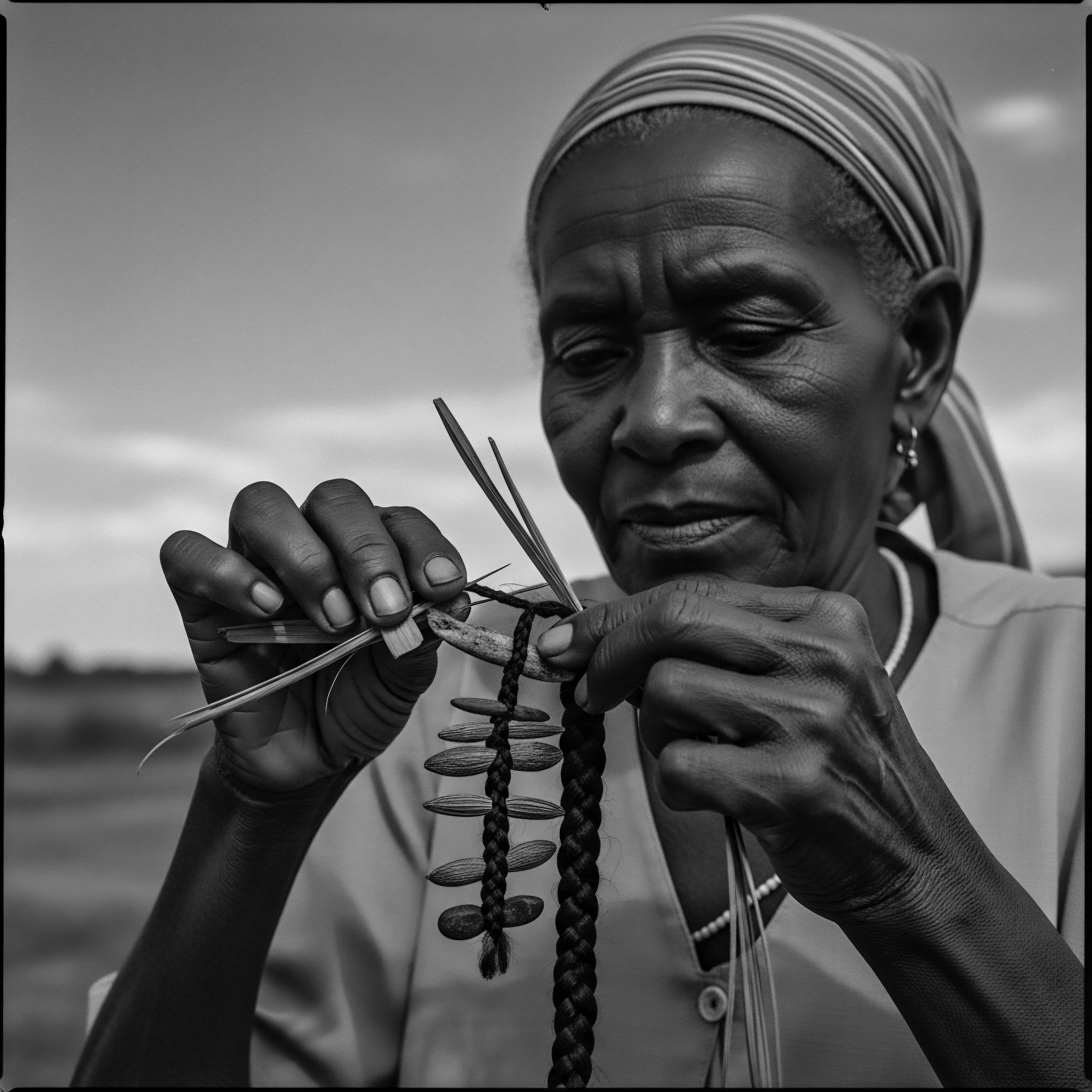
References
- Akanmori, H. (2015). Hairstyles, Traditional African. In The SAGE Encyclopedia of African Cultural Heritage in North America. SAGE Publications, Inc.
- Akinlaja, O. (2014). Visual Documentation of Traditional Nigerian Hair Styles and Designs as a means of expressing Social and Cultural Heritage through. EA Journals .
- Byrd, A. D. & Tharps, L. L. (2002). Hair Story ❉ Untangling the Roots of Black Hair in America. St. Martin’s Press.
- Johnson, T. A. & Bankhead, T. (2014). Hair It Is ❉ Examining the Experiences of Black Women with Natural Hair. Open Journal of Social Sciences, 2, 86-100.
- Kwaw-Swanzy, Z. (2022). A Quick Ting On The Black Girl Afro .
- Omotos, A. (2018). Paper on the importance of hair in ancient African civilizations. Journal of Pan African Studies .
- Robbins, C. R. (2012). Chemical and Physical Behavior of Human Hair. Springer.
- Sperling, L. C. & Sau, P. (1992). Hot comb alopecia ❉ a retrospective study of 10 women. Journal of the American Academy of Dermatology, 26(5 Pt 1), 743-747.
- Oluwaseyi, M. (2021). Effects of Hair Treatment with Shea Butter on Bleached Hair. Journal of Convergence for Information Technology .
- Sharaibi, O. J. Oluwa, O. K. Omolokun, K. T. Ogbe, A. A. & Adebayo, O. A. (2024). Cosmetic Ethnobotany Used by Tribal Women in Epe Communities of Lagos State, Nigeria. Journal of Complementary Medicine & Alternative Healthcare, 12(4), 555845.
- Abasi, A. & Olatunji, S. (2024). Cosmetopoeia of African Plants in Hair Treatment and Care ❉ Topical Nutrition and the Antidiabetic Connection?. Diversity, 16(2), 96.
- Upadhye, S. U. Tandale, P. S. Garje, S. Y. & Sayyed, G. A. (2024). Review on ❉ Significance of Herbal Hair Oil. International Journal of Research Publication and Reviews, 5(10), 64-69.
